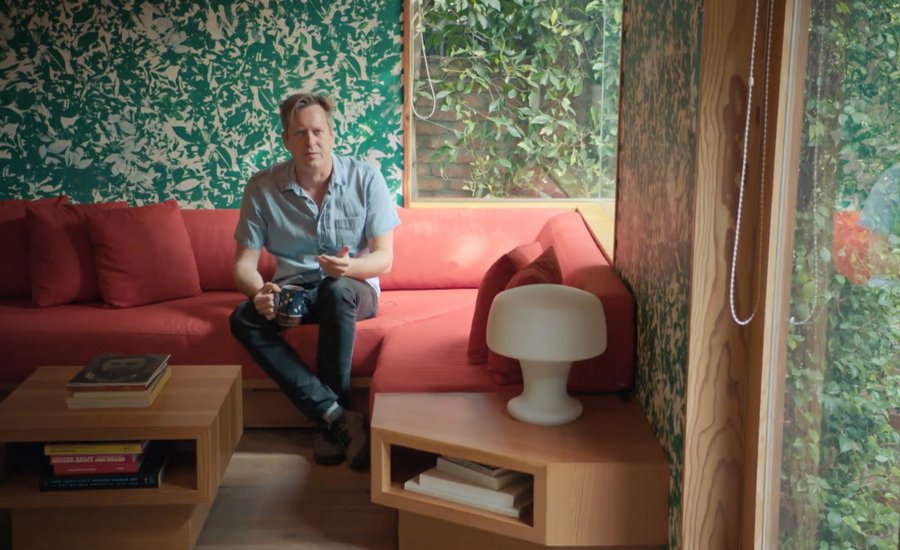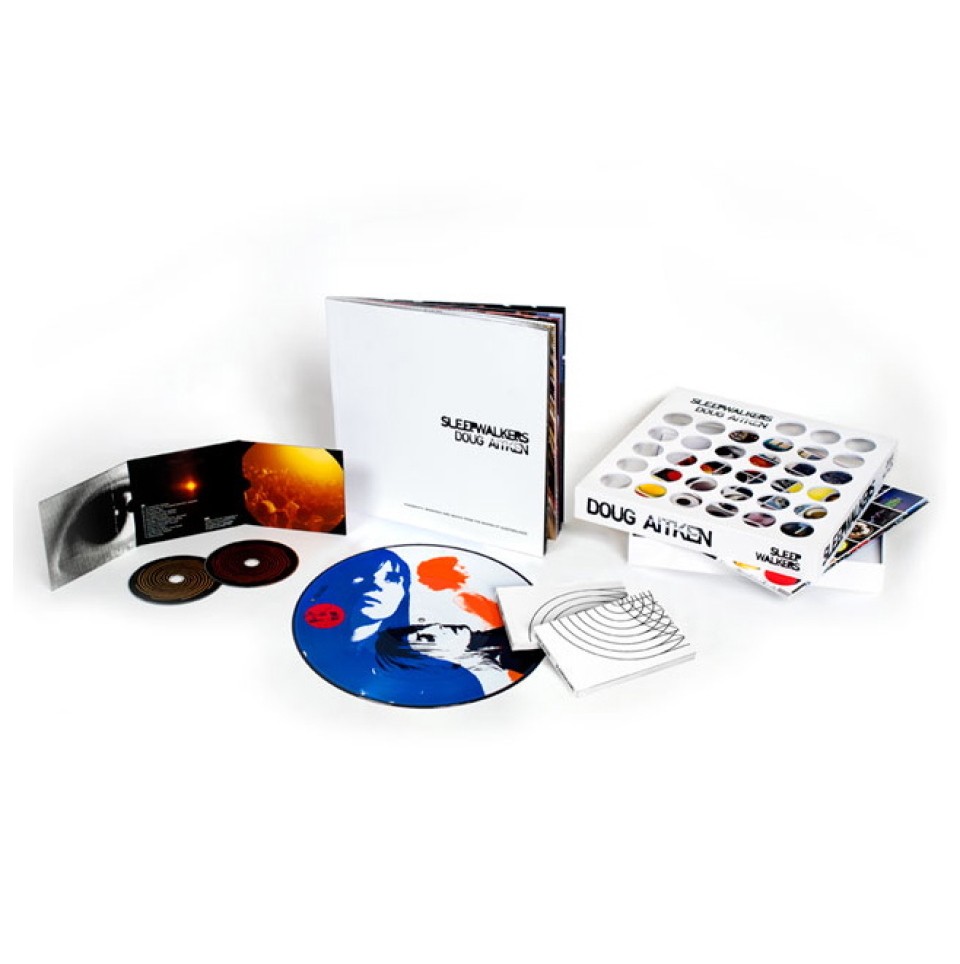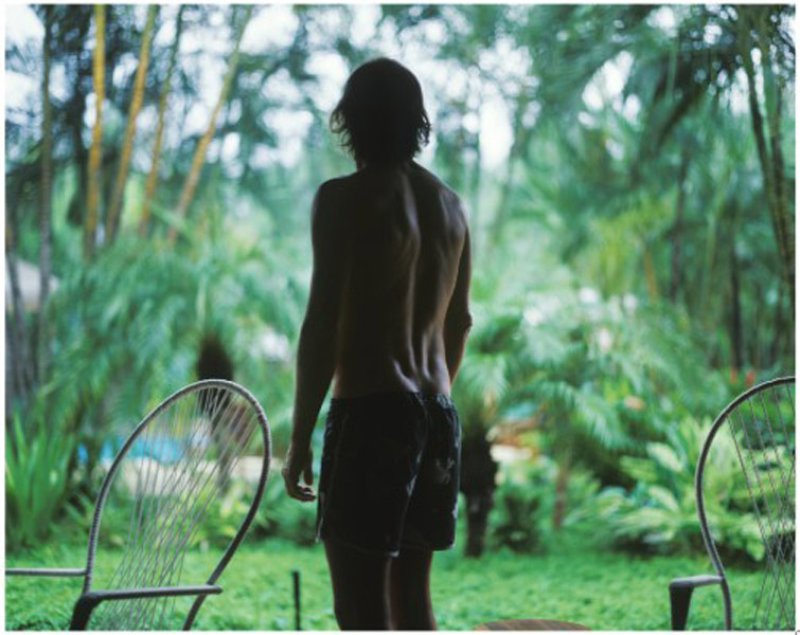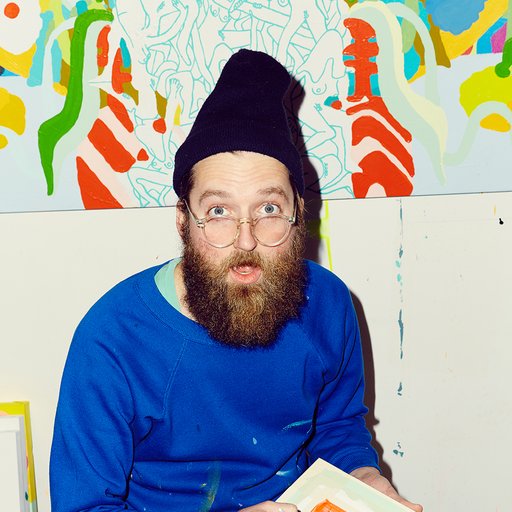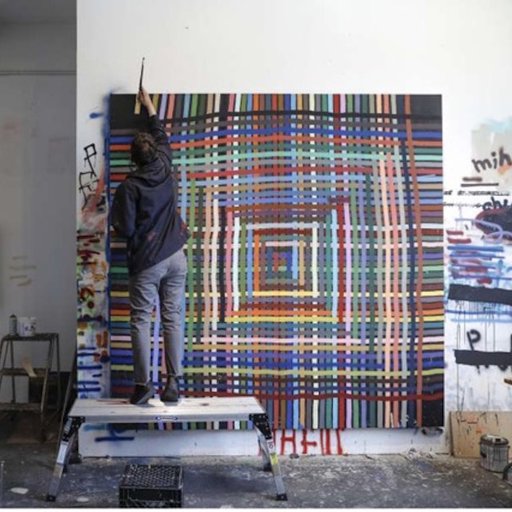While artist Doug Aitken certainly doesn't shy away from institutional exhibition-making (he's shown his work at the Whitney, MoMA, the Pompidou, among countless other prestigious museums and galleries), he's perhaps most known for staging "encounters" outside the confines of the white cube. One of his most recent projects entitled Underwater Pavilions (associated with his survey show at MoCA in Los Angeles), consisted of three underwater pentagonal structures placed off the coast of Catalina Island near LA. Seeing it meant strapping on some scuba gear (or at least a trusty snorkel) and swimming among the fish through the openings of its mirrored walls.
The making of the installation was documented in KCET's Artbound television series in the episode “Electric Earth: The Art of Doug Aitken,” which aired this past Thursday—but you can watch it below:
Artspace's Loney Abrams caught up with Aitken to discuss perception in the age of virtual reality, the challenges of producing ocean-bound sculpture, and his upcoming show at New York's 303 Gallery opening next month.
There’s a hour-long episode of Artbound featuring your work that premiered on PBS last week. Much of it focuses on your Underwater Pavilions . Can you tell me a little bit about how that project was conceived?
At that period of time I was very interested in where art could go outside the exhibition space. There's a history of Land Art and Earth Art, which is often in desert terrain, and there is urban art. Where I am, the ocean is close by and I started with that. Over 70 percent of the Earth is underwater. I started thinking about this idea in a very abstract way, initially. I started thinking, Is it possible to activate this? To create some kind of encounter or a work that would use this landscape? But also to bring the viewer into a situation where they are no longer standing or seated looking at an artwork or watching a film, but instead they're weightless, they're kind of moving in slow motion? In the ocean objects change, the depth of field, the color chroma, the sense of self in relation to what's around one; it's very different So I found that fascinating and I wanted to develop something that explored that.
It sounds like viewers' perception filtered through water was a big consideration for this piece. And I suppose you could achieve a similar affect by placing viewers in a pool or a tank. But what was it about the ocean, and this particular part of the ocean, that was important to you?
The ocean is so much a part of our lives. Without it we wouldn't have oxygen, we wouldn't be alive. There are deserts and forests under the ocean that are teaming with life and much of it is yet to be explored. I have no interest in doing something artificial. I wanted it to be in the Pacific ocean. It was really challenging to make that work. When you make a sculpture for a gallery or museum, you're basically making a work that is never meant to change after it leaves your studio. It enters a climate controlled world from then on. But the situation with the Underwater Pavilions was so drastically different. We had to make objects that could be pushed around by swells coming from Antartica, or the tide rising and lowering, or the compression of something which is multiple layers underneath the ocean's surface that could be crushed by the weight. You have to work within a completely different set of parameters. And those parameters are very real, very brutal, and very much defined by the brutality and hostility of the environment around it.
Are you a scuba diver?
I'm not. In fact I learned to dive for this project. Our whole studio learned at the same time, which was kind of amazing.
How would you describe our relationship to the ocean prior to this project?
It's always been something that's been very close to me—in my life and also geographically. It's a space that I'm constantly fascinated by, and a lot of my travels revolve around the ocean in one way or another. But this project really brought about a much greater intimacy. How can we no longer look at the ocean and see a horizontal line across the horizon and instead see it as something to be penetrated, and how do we create a door where you can kind of open up the ocean and step inside it? In a way that was what we're seeking to do with this project, to create an access project for something that was so anonymous.
In the Artbound episode you spoke about how our oceans are dying, how they're being destroyed by humans, and how there's a real need to draw out attention towards that. There are so many amazing things in the ocean already that are worth looking at... Maybe this is pessimistic and I hope you don't take this the wrong way, but I find this perspective really sad: that the way to get humans to care about the ocean is to put a man made thing into it.
I think thats a really good point, actually. That connects with what I was mentioning, which is that the ocean is almost so large and so vast that there's no starting point. When you address those topics you brought up, like the fragility of the ecosystem, it's hard for an individual to perceive something so wide and open. It was really about creating an encounter that's in a very specific place in a very specific time and trying to use it as a way to leverage the viewer into a place where they might be uncomfortable or a place that is foreign to them. I think for a lot of people, stepping under the surface of the ocean is stepping into a very unknown place, or a place where there are perhaps fears.
When you were talking about the vastness of the ocean, I was thinking about the ocean as hyper-object [as defined by Timothy Morton]—something so vast and large it's unfathomable. A lot of your work makes us look towards things that are typically out of our perception range. We live our lives on the surface of things; literally, we live on the surface of the land and we see the surface of the ocean. Underwater Pavilion gets us underneath the surface of the ocean. Sonic Pavilion (2009) got us beneath the surface of the land, and Modern Soul (2016) got us thinking about the sky as a volume. Of course, "looking beyond the surface" can be metaphorical as well. What do you think can be gained by looking literally passed the surface?
To be in the present and be aware of everything that's around you and not to gloss over it. It's interesting, this guy came over to the studio the other day, a friend of a friend who wanted to show me a virtual reality piece he had made. It was interesting because as I was experiencing it, I had this desire to get out of this VR experience and get into the reality around me. It was almost as if I felt like we'd reached the tipping point of synthetic reality and the acceleration of information. We have a desire now to return to the real in a certain way, but the idea of the real is different now than in the past—perhaps because now we have so much connectivity and so much information, so accessible so rapidly, that we can never get back to the way we had seen a physical encounter or a natural encounter of the past. But I do feel like we want that more than ever now.
And that was one of the really interesting things about the first time I dove into the pavilions; I had this kind of out of body experience. It was almost like I was watching myself move in slow motion. I was kind of shocked and coming to terms with the fact that I was no longer looking at an artwork that I was standing there viewing. Instead I was authoring my own experience, I was floating and moving, I could speed up or slow down, I could find these different relationships with it. It was very interactive in a strange way. I think that yesterday when I had put on those VR goggles, I didn't feel that same way. I felt that someone had authored this world for me. They had controlled it and they had put me in a very specific set of encounters—but there was nothing more than that.
Recently I was looking at a photograph of a beach in Thailand and it was so beautiful and so perfect that the person I was with said, "Wow, it's so beautiful; it looks CGI." It was hard to believe it was real and not a rendering. And I thought, at what point did our standards for beauty shift from being based on nature to being based on digital representations of nature? And actually, when you were just now describing your experience swimming through the pavilions—which for you was out-of-body and visceral and real—I pictured something like a video game. In my head, I was seeing some kind of rendered simulation or something. I've never scuba dived before, so I probably have a reference for your experience that is more closely tied to a virtual experience than a real experience. At this point I think most of our reference points are virtual, at least for those of us who spend most of our waking hours in front of a computer. So it makes sense to me that you say we increasingly feel this need to have these very real experiences, to physically perceive the actual environment.
But at the same time you're also very involved in expanded cinema, representing reality through new media. It sounds like you're not super pumped on VR but on the other hand it could be something that would potentially fit very well into your practice, right? Do you see yourself experimenting with VR in the future?
I don't tend to feel like I want to subscribe to any medium per se. It's more really about having ideas, or having questions. Those start building into a language and they tell you what they need in terms of medium. So I'm open to everything.
This reminds me of a quote of yours that I wrote down while reading your interview in Phaidon's Doug Aitken monograph : “Photographs, sound works, installations, film, happenings are just vessels to be filled. I use a medium only when it’s absolutely necessary.” What do you mean by calling mediums "vessels to be filled"?
If we look at where we are and where we're going in art, there's a lot of space for individual's voices to be less defined by medium than by concept. It's interesting because I feel like we're living in a very expanded way right now; everything's a possibility and everything's an option—in terms of art making, and in terms of just communicating with someone. There shouldn't be segregation between areas of culture or the arts. I mean, at least in my view. I really enjoy it when I see things crossing over into different disciplines because I think that's what really happens in conversation anyways. We could be talking about a photograph of an ocean in Thailand and about music a minute later. And yet in culture there's still this incredible segregation. And I think that's one of the things that hopefully that will change in the near future and I think maybe that quote you're talking about also refers to that in one way or another. Maybe your identity isn't around the medium that you use but it's who you are, the questions you ask, the statements you make—and those can exist anywhere, any place. They can be permanent or ephemeral.
What are you working on now and what do you have coming up?
I'm staging a show in New York in a couple of weeks [opening April 13]. It's at 303 Gallery, and it's a piece we've been working on for about two years. It's an installation. The piece is kind of like Greek mythologies in the 21st century. It's the story of this man who's now about 87 years old. His name is Martin Cooper. He's this white-bearded, skinny fellow who invented the cell phone in the early '70s. It's this strange and mysterious story that's about the creation of this device that gets back to what we were discussing: ultimate connectivity. He created this tool that now is everywhere and it's completely transformed the way we see, the way we speak, the way we view ourselves in society. So the installation is a six sided room with multiple projections and mirrors and it starts with a straight story and then the piece becomes increasingly hallucinogenic and more interpretive. I think it's a very immersive piece. I'd love to share it with you.
[related-works-module]











